
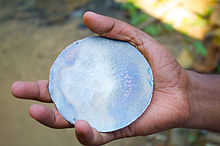

Aranmula kannadi, meaning the Aranmula mirror, is a handmade metal-alloy mirror, made in Aranmula, a small town in Pathanamthitta, today's Kerala, India.



Aranmula kannadi, meaning the Aranmula mirror, is a handmade metal-alloy mirror, made in Aranmula, a small town in Pathanamthitta, today's Kerala, India.
Unlike the normal "silvered" glass mirrors, it is a metal-alloy mirror or first surface mirror or front surface reflection mirror, which eliminates secondary reflections and aberrations typical of back surface mirrors. The exact metals used in the alloy are maintained as a family secret. Metallurgists suggest that the alloy is a mix of copper and tin. [1] It is polished for several days to achieve the mirror's reflective surface. [2]
They are considered to be one of the eight auspicious items or "ashtamangalyam" that play a role in the entry of the bride at a wedding venue. [3] [1] These unique metal mirrors are the result of then Kerala's rich cultural and metallurgical traditions. They have great historical and cultural value and are thought to bring good luck. [2] They are produced by one extended family in Aranmula. The origins of the Aranmula kannadi are linked to the Aranmula Parthasarathy Temple. According to legend, centuries ago the royal chief brought eight families of experts in temple arts and crafts from Tirunelveli district in Tamil Nadu to Aranmula to work on the mirrors in the Parthasarathy temple.
Kerala's chief minister Pinarayi Vijayan presented an Aranmula mirror to King Hamad of Bahrain during a visit to the Kingdom in 2017.
The British Museum in London has an Aranmula metal mirror 45 centimeters tall in its collection. [2] The mirrors received a geographical indication (GI) tag in 2004-05. [4]
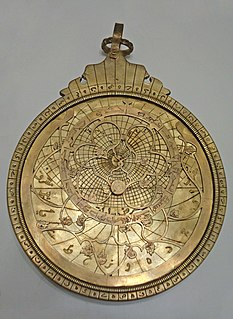
Brass is an alloy of copper (Cu) and zinc (Zn), in proportions which can be varied to achieve varying mechanical, electrical, and chemical properties. It is a substitutional alloy: atoms of the two constituents may replace each other within the same crystal structure.

Bronze is an alloy consisting primarily of copper, commonly with about 12–12.5% tin and often with the addition of other metals and sometimes non-metals, such as phosphorus, or metalloids such as arsenic, or silicon. These additions produce a range of alloys that may be harder than copper alone, or have other useful properties, such as strength, ductility, or machinability.

Metallurgy is a domain of materials science and engineering that studies the physical and chemical behavior of metallic elements, their inter-metallic compounds, and their mixtures, which are known as alloys. Metallurgy encompasses both the science and the technology of metals; that is, the way in which science is applied to the production of metals, and the engineering of metal components used in products for both consumers and manufacturers. Metallurgy is distinct from the craft of metalworking. Metalworking relies on metallurgy in a similar manner to how medicine relies on medical science for technical advancement. A specialist practitioner of metallurgy is known as a metallurgist.

Pathanamthitta District, is one of the 14 districts in the Indian state of Kerala. The district headquarters is in the town of Pathanamthitta. There are four municipalities in Pathanamthitta: Adoor, Pandalam, Pathanamthitta and Thiruvalla.

Bell metal or bell bronze is an alloy used for making bells and related instruments, such as cymbals. It is a form of bronze with a higher tin content, usually in approximately a 4:1 ratio of copper to tin. The higher tin content increases the rigidity of the metal, and increases the resonance. Historically, it was preferred for early cannons. Today, it also has industrial uses, being specified for valve bodies, piston rings, bearings, and bushings.
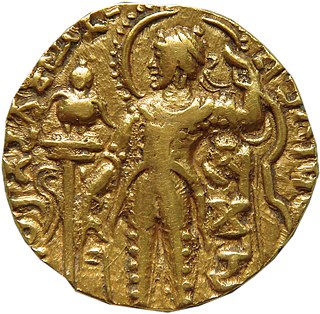
The history of metallurgy in the Indian subcontinent began prior to the 3rd millennium BCE and continued well into the British Raj. Metals and related concepts were mentioned in various early Vedic age texts. The Rigveda already uses the Sanskrit term Ayas(आयस) (metal). The Indian cultural and commercial contacts with the Near East and the Greco-Roman world enabled an exchange of metallurgic sciences. With the advent of the Mughals, foreign Mughal Empire further improved the established tradition of metallurgy and metal working in India. During the period of British rule in India, the metalworking industry in India stagnated due to various colonial policies, though efforts by industrialists led to the industry's revival during the 19th and 20th centuries.

Aranmula is a temple town in the state of Kerala, India. It is known as the cultural capital of Pathanamthitta district, located at a distance of around 116 km from Trivandrum, the capital of Kerala, it is situated on the banks of the holy river Pampa. A centre of pilgrimage from time immemorial and a trade post of eminence, when the river was the chief means of transport, it is near Kozhenchery in Pathanamthitta District. It is easily accessible from Chengannur railway station which is located around 10 km here.
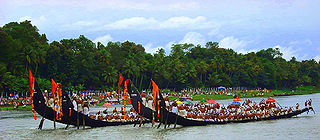
The Aranmula Boat Race the oldest river boat festival in Kerala, the south western State of India is held during Onam (August–September). It takes place at Aranmula, near Sri Parthasarady Temple dedicated to Lord Krishna and Arjuna in Pathanamthitta district of Kerala State. Its more of a ritual conducted on the birthday of Arjuna, than a race event. The snake boats move in pairs to the rhythm of full-throated singing and shouting watched by an exciting crowd. In 1972, snake boat races were also added to the program of the festival. Thousands of people gather on the banks of the river Pampa to watch the snake boat races. In 2019 Fifty Two snake boats or Palliyodams had participated in the festival. The oarsmen sing traditional boat songs Vanchippattu and wear white mundu and turbans. The golden lace at the head of the boat, the flag and the ornamental umbrella at the center make it a show of pageantry too.

Pathanamthitta, is a municipality situated in the Central Travancore region in the state of Kerala, India, spread over an area of 23.50 km2. It is the administrative capital of Pathanamthitta district. The town has a population of 37,538. The Hindu pilgrim centre Sabarimala is situated in the Pathanamthitta district; as the main transport hub to Sabarimala, the town is known as the 'Pilgrim Capital of Kerala'. Pathanamthitta District, the thirteenth revenue district of the State of Kerala, was formed with effect from 1 November 1982, with headquarters at Pathanamthitta. Forest covers more than half of the total area of the District. Pathanamthitta District ranks the 7th in area in the State. The district has its borders with Allepey, Kottayam, Kollam and Idukki districts of Kerala and Tamil Nadu.
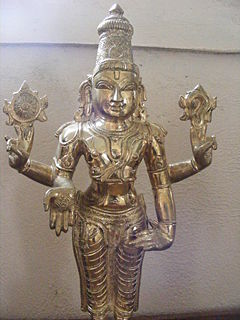
Panchaloha, also called Pañcadhātu, is a term for traditional five-metal alloys of sacred significance, used for making Hindu temple murti and jewelry.

Arsenical bronze is an alloy in which arsenic, as opposed to or in addition to tin or other constituent metals, is added to copper to make bronze. The use of arsenic with copper, either as the secondary constituent or with another component such as tin, results in a stronger final product and better casting behavior.

The Aranmula Parthasarathy Temple is a Hindu temple located near Aranmula, a village in Pathanamthitta District, Kerala, South India. It is dedicated to the god Krishna, an avatar of Vishnu, who is worshipped as Parthasarathy. Constructed in the Kerala style of architecture, it is one of the "Divya Desams", the 108 temples of Vishnu revered by the Alvar saints.
Bismuth bronze or bismuth brass is a copper alloy which typically contains 1-3% bismuth by weight, although some alloys contain over 6% Bi. This bronze alloy is very corrosion-resistant, a property which makes it suitable for use in environments such as the ocean. Bismuth bronzes and brasses are more malleable, thermally conductive, and polish better than regular brasses. The most common industrial application of these metals are as bearings, however the material has been in use since the late nineteenth century as kitchenware and mirrors. Bismuth bronze was also found in ceremonial Inca knives at Machu Picchu. Recently, pressure for the substitution of hazardous metals has increased and with it bismuth bronze is being marketed as a green alternative to leaded bronze bearings and bushings.
Metals and metal working had been known to the people of modern Italy since the Bronze Age. By 53 BC, Rome had expanded to control an immense expanse of the Mediterranean. This included Italy and its islands, Spain, Macedonia, Africa, Asia Minor, Syria and Greece; by the end of the Emperor Trajan's reign, the Roman Empire had grown further to encompass parts of Britain, Egypt, all of modern Germany west of the Rhine, Dacia, Noricum, Judea, Armenia, Illyria, and Thrace. As the empire grew, so did its need for metals.
Sharada Srinivasan is an archaeologist specializing in the scientific study of art, archaeology, archaemetallurgy and culture. She is associated with the National Institute of Advanced Studies, Bangalore, India, and an Honorary University Fellow at the University of Exeter, UK. Srinivasan is also an exponent of classical Bharata Natyam dance. She was awarded India's fourth highest civilian award the Padma Shri in 2019.
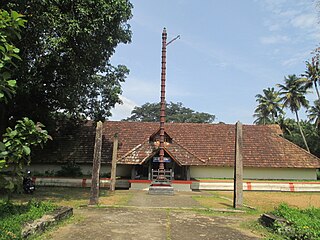
The Thrichittatt Mahavishnu Temple is a Hindu temple dedicated to Supreme God Vishnu and located in Chengannur, Alappuzha District, Kerala, South India. Constructed in the Kerala style of architecture, the temple is glorified in the Divya Prabandha, by Nammalwar, one of the saint poets of the 8th century. It is one of the 108 Divyadesam dedicated to Krishna, an avatar of Vishnu, who is worshipped as Imayavarappan. The nearest railway station to the temple is located in Chengannur, while the nearest airports are Trivandrum International Airport and Nedupumpassery Airport Ernakulam.

The Thripuliyoor Mahavishnu Temple is a Hindu temple dedicated to MahaVishnu and located in Puliyoor, Alappuzha District, Kerala, South India. Constructed in the Kerala style of architecture, the temple is glorified in the Divya Prabandha, the early medieval Tamil canon of the Azhwar saints from the 6th–9th centuries AD. It is one of the 108 Divyadesam dedicated to Maha Vishnu, who is worshipped as Mayapiran/Thripuliyoorappan. The nearest railway station to the temple is located in Chengannur, while the nearest airport is Trivandrum International airport.

The Thiruvanvandoor Mahavishnu Temple is a Hindu temple dedicated to Vishnu and located in Thiruvanvandoor, Alappuzha District, Kerala, South India. Constructed in the Kerala style of architecture, the temple is glorified in the Divya Prabandha, the early medieval Tamil canon of the Azhwar saints from the 6th–9th centuries AD. It is one of the 108 Divyadesam dedicated to Krishna, an avatar of Vishnu, who is worshipped as Paambanaiappan. The nearest railway station to the temple is located in Chengannur, while the nearest airport is Trivandrum International Airport.

The conservation and restoration of copper and copper-alloy objects is the preservation and protection of objects of historical and personal value made from copper or copper alloy. When applied to items of cultural heritage, this activity is generally undertaken by a conservator-restorer.
Aranmula may refer to: